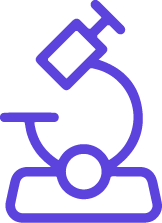The COVID-19 pandemic wasn’t just a global health crisis — it was a wake-up call for how vulnerable our healthcare systems are to medicine shortages. From masks to ICU drugs, Europe faced an urgent reality: the supply chain for critical medical products was too fragile.
In response, the European Union has rolled out a series of initiatives to tighten its grip on the production, regulation, and monitoring of essential medicines. Central to this strategy is the Critical Medicines Act and the European Medicines Shortages Platform (ESMP) — a high-tech, coordinated effort to keep shelves stocked and healthcare systems functioning, no matter the crisis.
What are “Critical Medicines”?
Critical medicines are those indispensable to public health — especially for serious diseases where alternatives are limited or nonexistent. When these drugs are in short supply, the consequences ripple through entire healthcare systems. The EU now maintains an official Union list of critical medicines, with over 270 active substances identified as vulnerable due to their limited suppliers or production outside the EU.
The problem: why are medicines going missing?
A medicine shortage can stem from many places, but most commonly it’s a manufacturing issue. In fact, over 50% of shortages in the EU from 2022–2023 were due to production disruptions. Add to that spikes in demand, regulatory hurdles, and over-reliance on imports, and you get a perfect storm — one that the pandemic only made worse.
The experience of COVID-19 showed just how ill-prepared the system was. Border closures, supply hoarding, and fragmented national responses left many countries struggling to access even the most basic tools for care. It became clear that a more coordinated, transparent, and resilient approach was needed.
Critical Medicines Act
Adopted in 2025, the Critical Medicines Act aims to address Europe’s pharmaceutical Achilles heel by:
- Boosting EU-based manufacturing of critical drugs and ingredients
- Diversifying supply chains to reduce dependence on single countries or suppliers
- Supporting public procurement strategies that favor local production
- Fast-tracking administrative and regulatory support for companies investing in strategic projects
European Medicines Shortages Platform (ESMP)
To make all of this work, the European Medicines Agency (EMA) launched the ESMP — a centralized IT platform that tracks and reports real-time data on medicine shortages. Stakeholders, from national regulators to pharmaceutical companies, use the ESMP to report shortages, monitor supply trends, and coordinate responses across the EU.
Key features of the platform include:
- Separate portals for national authorities, marketing authorization holders (MAHs), and the general public
- Training, guides, and support for users
- Real-time analytics on supply, demand, and distribution
- Interoperability with national systems to reduce duplication and error
Roles and responsibilities
From EU institutions to individual healthcare professionals, everyone is involved in keeping Europe’s medicine supply resilient.
Key players include:
- EMA & MSSG (Medicine Shortages Steering Group): Coordinate crisis response, maintain critical lists, and advise on supply chain strategies
- Member States & NCAs: Monitor local shortages, report data to ESMP, and implement procurement strategies
- Pharma Industry (MAHs): Must report product status, availability, and production issues
- General Public: Can access shortage information through a public ESMP interface
Long-term goals: quality, safety & resilience
Beyond just reacting to crises, the new framework pushes for:
- Better clinical trial design and transparency
- Protection of patient safety and reduction of counterfeit risks
- A harmonized, less burdensome regulatory environment—especially for SMEs
- Increased cybersecurity for digital health infrastructure
- Preparedness for future pandemics or biothreats
How QbD Group supports the transition
Companies navigating these regulatory waters aren’t left alone. The QbD Group offers a full range of services to help pharma companies stay compliant, interoperable with ESMP, and audit-ready.
From training and reporting to strategy and market access, QbD supports both local companies and international manufacturers looking to enter the EU.














